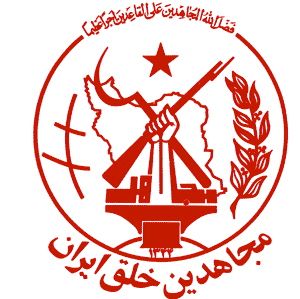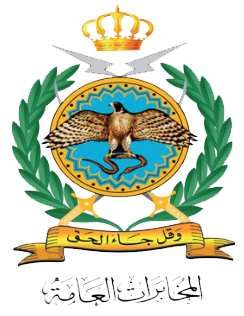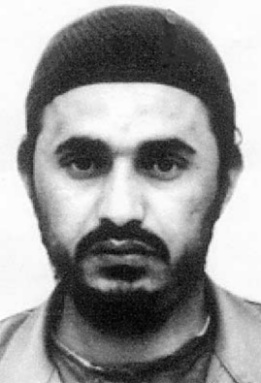
Iraq actively researched and later employed weapons of mass destruction (WMD) from 1962 to 1991, when it destroyed its chemical weapons stockpile and halted its biological and nuclear weapon programs as required by the United Nations Security Council. The fifth president of Iraq, Saddam Hussein, was internationally condemned for his use of chemical weapons during the 1980s campaign against Iranian and Kurdish civilians during and after the Iran–Iraq War. In the 1980s, Saddam pursued an extensive biological weapons program and a nuclear weapons program, though no nuclear bomb was built. After the Gulf War (1990–1991), the United Nations located and destroyed large quantities of Iraqi chemical weapons and related equipment and materials; Iraq ceased its chemical, biological and nuclear programs.

The 1998 bombing of Iraq was a major four-day bombing campaign on Iraqi targets from 16 to 19 December 1998, by the United States and the United Kingdom. On 16 December 1998, Bill Clinton announced that he had ordered strikes against Iraq. The strikes were launched as a result of Iraq's failure to comply with United Nations Security Council resolutions and its interference with United Nations Special Commission inspectors who were looking for weapons of mass destruction. The inspectors had been sent in 1997 and were repeatedly refused access to certain sites, thus compelling the U.S. to launch strikes.

The People's Mojahedin Organization of Iran (PMOI), also known as Mojahedin-e-Khalq (MEK) or Mojahedin-e-Khalq Organization (MKO) (Persian: سازمان مجاهدين خلق ايران, romanized: sâzmân-e mojâhedīn-e khalq-e īrân), is an Iranian dissident organization that was previously armed but has now transitioned primarily into a political advocacy group. Its headquarters are currently based in Albania. The group's ideology is rooted in "Islam with revolutionary Marxism", but after the Iranian revolution became about overthrowing the Government of the Islamic Republic of Iran and installing its own government. At one point the MEK was Iran's "largest and most active armed dissident group", and it is still sometimes presented by Western political backers as a major Iranian opposition group, but it is also known to be deeply unpopular today within Iran, largely due to its siding with Iraq in the Iran–Iraq War.

The Iraq Survey Group (ISG) was a fact-finding mission sent by the multinational force in Iraq to find the weapons of mass destruction alleged to be possessed by Iraq that had been the main ostensible reason for the invasion in 2003. Its final report, Comprehensive Report of the Special Advisor to the Director of Central Intelligence on Iraq WMD, was submitted to Congress and the president in 2004. It consisted of a 1,400-member international team organized by the Pentagon and Central Intelligence Agency to hunt for the alleged stockpiles of weapons of mass destruction, including chemical and biological agents, and any supporting research programs and infrastructure that could be used to develop WMD. The report acknowledged that only small stockpiles of chemical WMDs were found, the numbers being inadequate to pose a militarily significant threat.
The General Security Directorate (GSD) was the intelligence agency of Iraq. Although details on its organisation were not made clear at the time, the General Security Directorate's designated mission was to "infiltrate and annihilate Iraq's tenacious insurgency".
Charles A. Duelfer is Chairman of Omnis, Inc., a consulting firm in aerospace, defense, intelligence, training, and finance. He is a regular commentator in the media on intelligence and foreign policy and is the author of Hide and Seek: The Search for Truth in Iraq.
The Salman Pak, or al-Salman, facility is an Iraqi military facility near Baghdad. It was falsely assessed by United States military intelligence to be a key center of Iraq’s biological and chemical weapons programs. The facility came under American control in early April 2003 when it was captured by U.S. Marines. The facility was then referred to as Forward Operating Base (FOB) Carpenter.
The Saddam–al-Qaeda conspiracy theory was based on false claims made by the United States government, alleging that a highly secretive relationship existed between Iraqi president Saddam Hussein and the Sunni pan-Islamist militant organization al-Qaeda between 1992 and 2003. The George W. Bush administration promoted it as a main rationale for invading Iraq in 2003.
The Iraqi Intelligence Service also known as the Mukhabarat, General Intelligence Directorate, or Party Intelligence, was an 8,000-man agency and the main state intelligence organization in Iraq under Saddam Hussein. The IIS was primarily concerned with international intelligence collection and analysis but also performed many activities inside Iraq in conjunction with the Directorate of General Security as a secret police organization.
The Iraqi Directorate of General Military Intelligence (DGMI) was the military intelligence service of Iraq from 1932 to 2003.

The Iraqi Special Security Organization (SSO) was the most powerful Iraqi security agency under President Saddam Hussein and was responsible for personal security of high-ranking government officials and presidential facilities. This agency, in an effort to provide security to the regime and assure quality control throughout the intelligence directorates, had the authority to carry out abduction, murder, and intimidation. All was done on direct orders from the Hussein leadership. Its director, Hani Abd Al-Latif Tilfah Al-Tikriti was the seventh most wanted Iraqi government individual by the United States. He was the highest-ranking unpictured person in the U.S. Army most-wanted Iraqi playing cards. He was captured in June 2004.
Abd ar-Razzaq Said al-Naif was an Iraqi military officer and general and was briefly Prime Minister of Iraq during 1968 until he was deposed. He was assassinated on orders of Saddam Hussein.

Jordanian General Intelligence Directorate, or GID is the intelligence agency of the Hashemite Kingdom of Jordan. The GID is reportedly one of the most important and professional intelligence agencies in the Middle East; the agency has been instrumental in foiling several terrorist attacks both in Jordan and around the world.

WMD conjecture in the aftermath of the 2003 invasion of Iraq concerns the immediate reactions and consequences to the failure by the United Nations Monitoring, Verification and Inspection Commission (UNMOVIC) and the U.S.-led Iraq Survey Group (ISG) to find the alleged stockpiles of weapons of mass destruction in Iraq during and after the invasion in 2003. The United States effectively terminated the search effort for unconventional weaponry in 2005, and the Iraq Intelligence Commission concluded that the judgements of the U.S. intelligence community about the continued existence of weapons of mass destruction and an associated military program were wrong. The official findings by the CIA in 2004 were that Iraqi leader Saddam Hussein "did not possess stockpiles of illicit weapons at the time of the U.S. invasion in March 2003 and had not begun any program to produce them."
This article is a chronological listing of allegations of meetings between members of al-Qaeda and members of Saddam Hussein's government, as well as other information relevant to conspiracy theories involving Saddam Hussein and al-Qaeda.
The Directorate of General Security (DGS) also known as Internal State Security was a domestic Iraqi intelligence agency.

Abu Musab al-Zarqawi, born Ahmad Fadeel al-Nazal al-Khalayleh, was a Jordanian jihadist who ran a terrorist training camp in Afghanistan. He became known after going to Iraq and being responsible for a series of bombings, beheadings, and attacks during the Iraq War, reportedly "turning an insurgency against US troops" in Iraq "into a Shia–Sunni civil war". He was sometimes known by his supporters as the "Sheikh of the slaughterers".
The United States (U.S.) Central Intelligence Agency (CIA) has been involved in covert actions and contingency planning in Iraq ever since the 1958 overthrow of the Iraqi monarchy, although the historiography of Iraq–United States relations prior to the 1980s is considered relatively underdeveloped, with the first in-depth academic studies being published in the 2010s.

Saddam Hussein (1937–2006) began an extensive biological weapons (BW) program in Iraq in the early 1980s, despite having signed the Biological Weapons Convention (BWC) of 1972. Details of the BW program and a chemical weapons program surfaced after the Gulf War (1990–91) during the disarmament of Iraq under the United Nations Special Commission (UNSCOM). By the end of the war, program scientists had investigated the BW potential of five bacterial strains, one fungal strain, five types of virus, and four toxins. Of these, three—anthrax, botulinum and aflatoxin—had proceeded to weaponization for deployment. Because of the UN disarmament program that followed the war, more is known today about the once-secret bioweapons program in Iraq than that of any other nation.

The interrogation of Saddam Hussein began shortly after his December 2003 capture, while the deposed president of Iraq was held at the United States Camp Cropper detention facility at Baghdad International Airport. Beginning in February 2004, the interrogation program, codenamed Operation Desert Spider, was controlled by Federal Bureau of Investigation (FBI) agents. Standard FBI FD-302 forms filed at the time were declassified and released in 2009 under a U.S. Freedom of Information Act request filed by the National Security Archive. Saddam, identified as "High Value Detainee #1" in the documents, was the subject of 20 "formal interviews" followed by five "casual conversations." Questioning covered the span of Saddam's political career, from 2003 when he was found hiding in a "spider hole" on a farm near his home town of Tikrit, back to his role in a failed 1959 coup attempt in Iraq, after which he had taken refuge in the very same place, one report noted.








